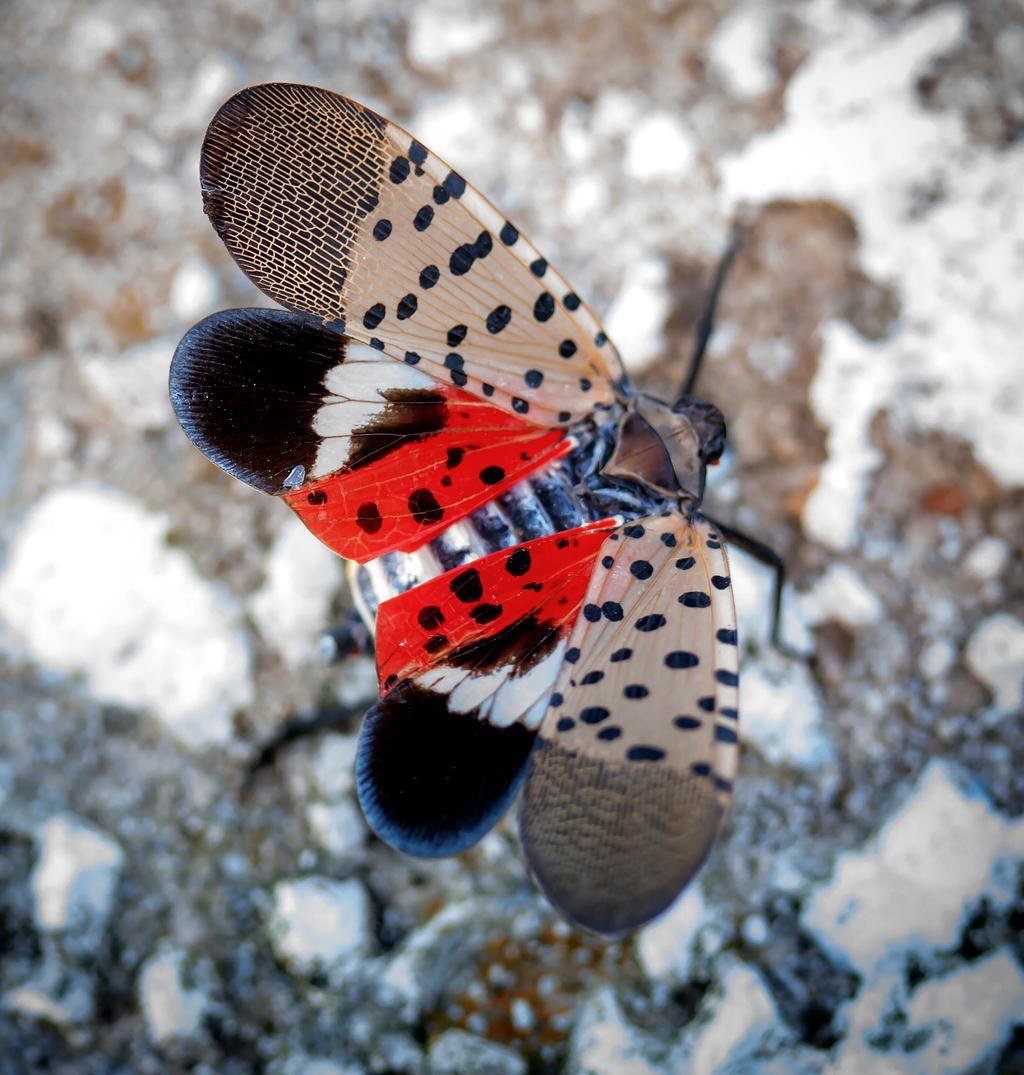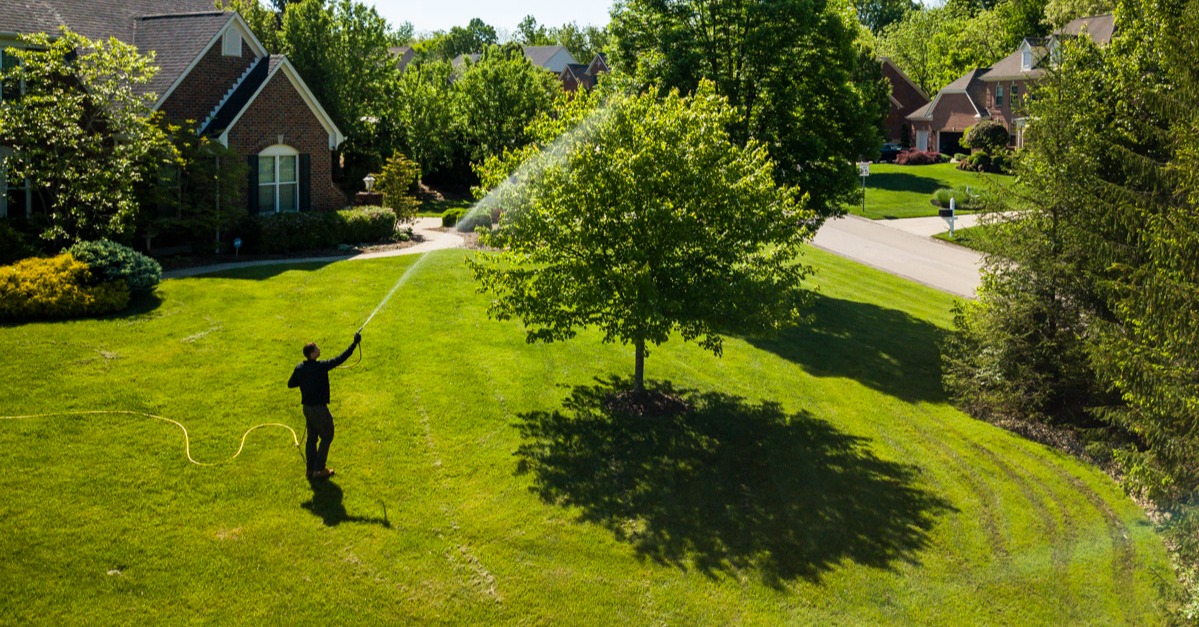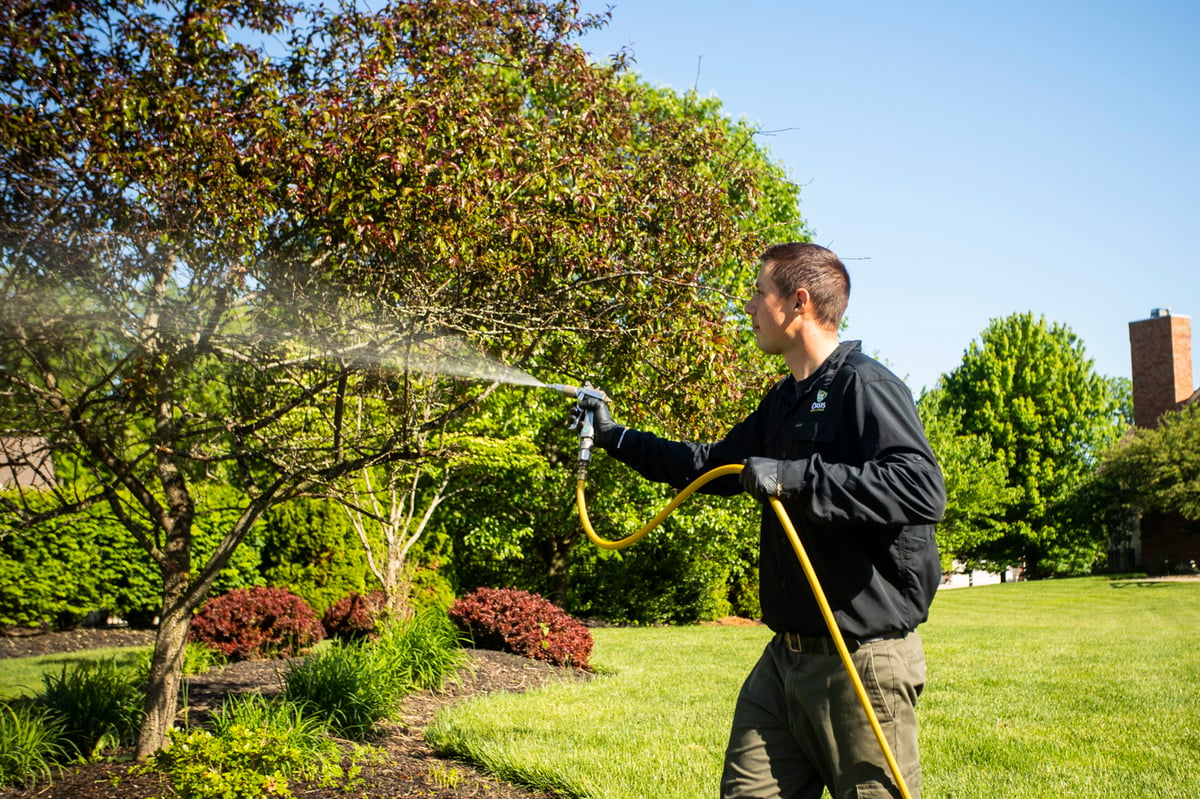You may have been hearing some news about Spotted Lanternflies in Ohio. The Spotted Lanternfly was first discovered to have made its way into the US in 2014 in the state of Pennsylvania. It’s not surprising that it has now made its way to other states, including Ohio.
We know that you might be concerned about this invasive pest, but we want to assure you we’re staying on top of it.
Because we’re getting questions about Spotted Lanternflies in Ohio we wanted to put together an article with some helpful information.
Here are a few things you should know about Spotted Lanternflies.
What are Spotted Lanternflies?
The Spotted Lanternfly is an invasive pest that is native to Asia. It can be spread long distances when eggs are laid on something that is moved (like a car). As this pest shows up in new states across the country, worry is growing over the impact that it could have on agriculture.
What Does a Spotted Lanternfly Look Like?
The adult Spotted Lanternfly is pretty easy to distinguish as it has a unique look. Its forewings are gray with black spots while its wing tips have black blocks outlined in gray. The hind wings have contrasting patches of red and black and its abdomen is yellow.

Of course, you might spot one of these pests before it reaches adulthood. The nymphs do look quite different from the adults and are just black with white spots. During their final nymph stage, they develop those distinguishable red patches.
As an adult, a Spotted Lanternfly is approximately one inch long so they’re quite easy to see.
How Does Spotted Lanternfly Damage Occur?
The big problem with the Spotted Lanternfly is that it uses its piercing mouthparts to suck the sap out of trees. In its native region of Asia, the Spotted Lanternfly was known for preferring the “Tree of Heaven.” However, since turning up in the United States, the list of host plants that the Spotted Lanternfly will attack has grown.

Some of the host trees that Spotted Lanternflies have been found on include the following. Keep in mind that this list is far from complete and seems to continue to grow.
- Birch
- Red Maple
- Walnut
- Oak
- Pine
- Maple
- Sycamore
Spotted Lanternfly damage can begin as early as the nymph stage. This might include stunted growth and reduced production. If many Spotted Lanternflies have been feeding on a tree, you’re also likely to notice dripping sap. This sap can attract other insects to the tree like ants and bees.
How to Keep Spotted Lanternflies Away
One important step that Ohioans can take in reducing the Spotted Lanternfly population is to seek out and destroy the eggs that might have been laid on and around their property. We know, it sounds a little dramatic, but it really can make a huge difference over time if everyone makes an effort.

The Spotted Lanternfly has demonstrated that it will lay eggs on any hard surface. This might include the side of your home, your car, on rocks, on trees, or even on your outdoor furniture.
Spotted Lanternfly egg masses look like a smudge of clay or dirt. This is the protective covering that is shielding the eggs.
It is advised that any eggs that are found are carefully scraped from the surface, crushed, and put in a sealed bag with rubbing alcohol.
How to Kill Spotted Lanternflies: Spotted Lanternfly Treatment
Fortunately, there have been products developed that can kill Spotted Lanternflies. These products are applied directly to the tree trunk where the pest is feeding.
At press time (when this article was published), we were in the process of developing a Spotted Lanternfly treatment plan. Because the pest is currently not widespread in our region of Ohio, we’re in the early stages.

But we’re aware that what has been happening in other states is likely to start happening here. We know that the Spotted Lanternfly is likely going to continue to spread and we’re already preparing for how to handle it.
We’ve been keeping in touch with what Ohio State University is recommending and we’re closely watching this pest.
When the time is right, we will implement a Spotted Lanternfly treatment program.
If you’re currently concerned, or you’ve noticed the Spotted Lanternfly on your property, then we encourage you to reach out to us and we’ll develop a solution.
Gaining Peace of Mind About Pests on Your Property
At the end of the day, we know that you hire us so that you don’t have to worry about threats to your landscape, like the Spotted Lanternfly. That’s why we’re keeping up with everything there is to know about Spotted Lanternflies in Ohio and watching the situation as it evolves. While this is currently the big pest on everyone’s radar, by next year, it could be something new.
Instead of worrying about any of it, you can rest assured that we’ve got you covered.
We’re staying on top of these problems so that you don’t have to. All you have to do is enjoy your landscape and know that you’re in good hands.
Want to learn more about professional lawn care services for your Cincinnati, Dayton, Ohio, or Northern Kentucky home? Request your quote, choose the lawn care program that’s right for you, and then sit back and relax as the pros help you get the lawn of your dreams without worries.
Image Source: spotted lanternfly on leaf, spotted lanternfly
